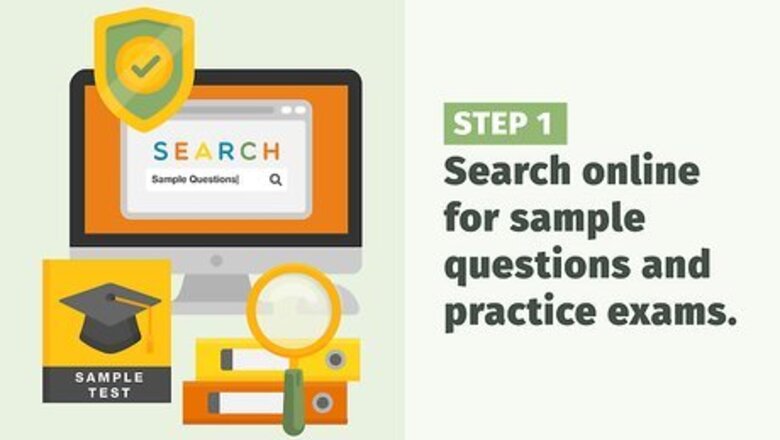
views
Taking Practice Tests
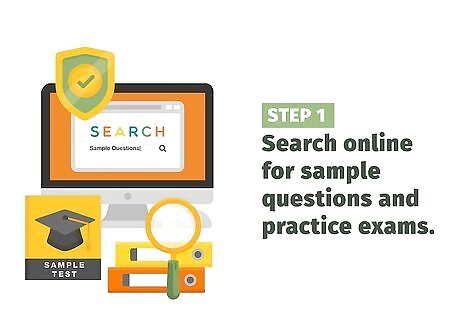
Search online for sample questions and practice exams. Practice exams are one of the best tools you can use to prepare. They contain a ton of sample questions so that you can get a feel for what the actual test will be like. There are many free practice questions and tests online. If you don’t see them on the testing site, try a simple internet search. Some sites also have practice exams that you can purchase. You can also buy books that will help you prepare for the specific exam you’re taking. Check online or at bookstores. Or try your local or school library!

Start by taking untimed tests to get comfortable. The purpose of your first practice test is to help you get used to the format of the tests and to find your groove. Don't worry about how fast you are. Instead, focus on using the strategies that you've learned and carefully reading the passages and questions. Use the answer keys to grade your tests and to see what you've done right and what you've done wrong. Take as many untimed tests as you need to learn the process. It might take you a few tries to get used to the format.
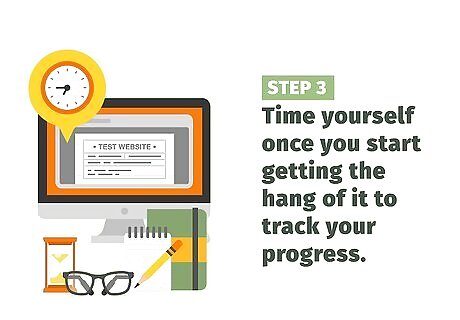
Time yourself once you start getting the hang of it to track your progress. Once you feel more confident, start doing timed tests. Check the guidelines for the specific test you're prepping for and follow those. For example, for the SAT, you'll have 65 minutes to answer 52 multiple-choice questions. If you find yourself struggling to finish, try skimming the passages so that you can get done sooner. Practice doesn't make perfect, but it does make you better. As you keep taking practice tests, you will be able to read the passages and answer the questions more quickly.

Try taking a test prep course for more guidance and practice, if possible. Many private companies offer intensive courses that help you prepare for standardized tests, including the reading comprehension portion. They can be pricey, but if you have the funds available, they can also be really helpful. Search online to see if there are test prep courses in your area and contact them with questions. Sign up for the course a few months in advance of when you want to take the exam. If you’re a student, you might be able to find similar programs at your school. Check with the academic resource center or student success services to see if they have any help to offer.
Understanding What You Read
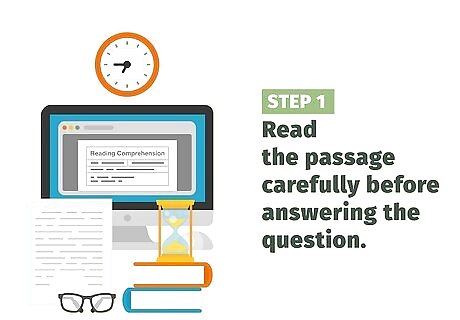
Read the passage carefully before answering the question. Take a few minutes to read the entire passage so that you understand the main ideas. As you read, look for main ideas and supporting examples. Don’t try to answer any questions before you read the entire passage. You don’t want to miss something important! As you read, look for: Contrasting and comparable ideas Ideas the author is advancing and ideas the author is simply reporting Ideas that are speculative Examples that are specific
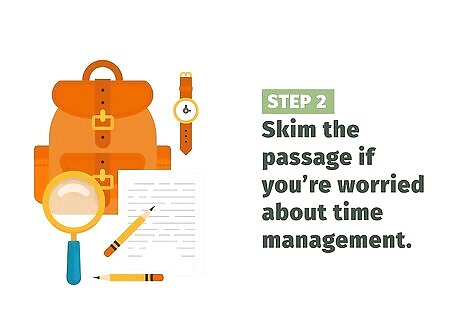
Skim the passage if you’re worried about time management. If you're a fast reader, you can skip this step. But if you're concerned that you won't have time to read the entire passage, definitely practice your skimming skills. When you skim, read the first line and the last line of each paragraph carefully. Let your eyes go quickly over the other sentences. This will ensure that you get the main points, but don't spend too much time focusing on the details. You can determine whether or not you need to skim when you take timed practice tests. If you're struggling to finish on time, get in the habit of skimming.
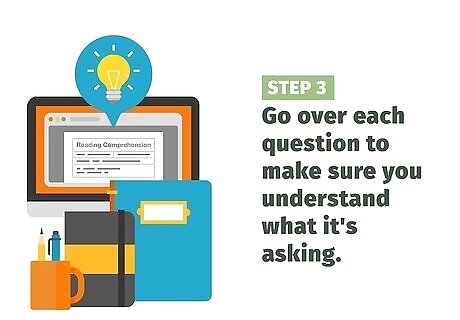
Go over each question to make sure you understand what it's asking. After you read the passage, read the entire question carefully. Now that you know what the reading is about, you can check to make sure you are very clear on what the question is asking. For example, if the question is, “What argument does the author make about the origins of World War II?” don’t spend time looking for details about what sorts of tanks were used in battles. It's a good idea to go back and read the passage more in-depth to find the answer to the question, especially if you skimmed the passage the first time.
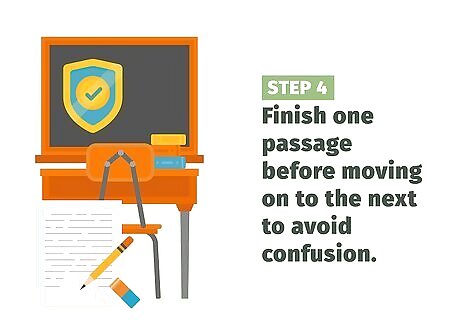
Finish one passage before moving on to the next to avoid confusion. While it might be tempting to try to get a feel for each portion of the test, don’t get ahead of yourself. Stick to reading one passage at a time and answering the questions related to that passage. Read the passage through carefully and don’t read another one until you are done with it. That doesn’t mean you have to go in any particular order. It’s totally fine to choose to start with the second passage and come back to the first one. You might choose to do this if history is your strong suit and that’s the basis for the second passage, for example. It can be helpful to start with your most comfortable area.
Answering Multiple Choice Questions
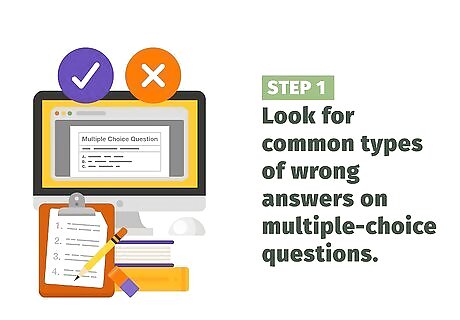
Look for common types of wrong answers on multiple-choice questions. This is where your practice tests are going to come in handy. As you complete your practice questions, pay attention to what you are getting right and what you are getting wrong by referring to the sample answers. This will help you pinpoint what makes a good answer and what makes a bad answer. Keep in mind these things that contribute to a bad answer: Answers that make assumptions Answers that are too specific or too vague Answers that don’t connect directly to the text Answers that don’t directly answer the question that was asked
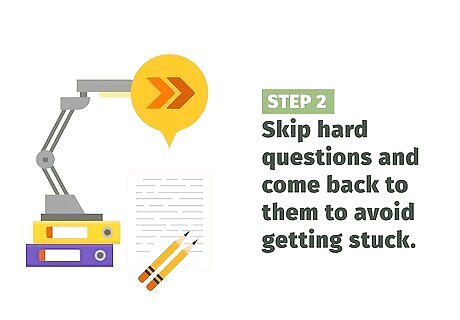
Skip hard questions and come back to them to avoid getting stuck. Multiple-choice questions can be tricky, which can make them really frustrating. Rather than spending time stressing, move on if you find yourself drawing a blank. If you're taking more than 1 minute to pick an answer, go on to the next question. Come back to the unanswered question later. Time away from it can help give your brain a little refresh. Make a little mark next to the number of the unanswered question so that you remember to come back to it.
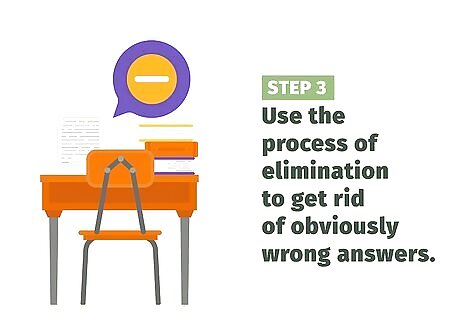
Use the process of elimination to get rid of obviously wrong answers. Typically, there are 2 answers that are obviously wrong. Start by crossing those out. Next, cross out the answer that is probably wrong. You'll be left with the answer that is most likely right. That might sound overly simple, but that's really because multiple-choice tests are largely about practicing and strategy. You've got this! A sample question might be: "In the passage, Nick expressed his jealousy of Gatsby. Was he jealous because Gatsby: A: Was divorced B: Was ill C: Was wealthy D: Fought in the war You can go ahead and cross out A and B because it's pretty likely that no one is jealous of someone for being sick or divorced. While it is possible that Nick would be jealous if Gatsby was a war hero, there are plenty of context clues in the passage that talk about money. You can confidently choose C.
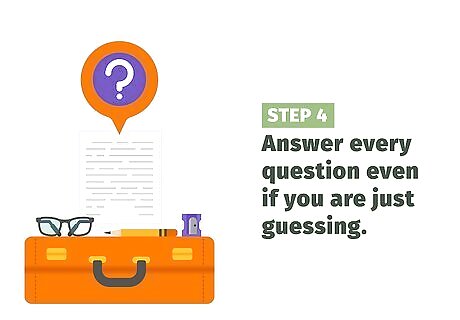
Answer every question even if you are just guessing. On tests like the SAT, you don't lose any points for wrong answers. That means you have nothing to lose by taking a guess! There are 4 choices on multiple-choice questions. Even if you have no clue what the correct answer is, you have a 25% chance of getting it right just by guessing. So don't leave any questions blank. If you're running out of time, go ahead and mark an answer for each question.
Writing Short Essay Answers
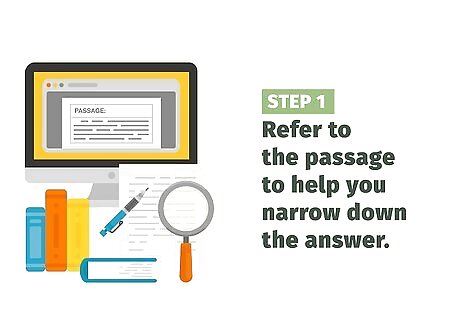
Refer to the passage to help you narrow down the answer. Think of this like an open-book exam. You don’t have to try to memorize every important part of the passage. That’s way too stressful! Instead, just refer back to the reading as you write your answer. That way you can make sure to get your facts straight. Try looking for keywords that seem significant. You can also look for a theme that is emphasized more than once. That's a good indicator that it is important! If you’re trying to add some specific examples to your answer, the text is the best place to find them. Look over the passage to find examples to support the point you are making. For example, if you are writing an essay about recycling, look for specific examples about plastic, glass, and paper products to include in your answer.
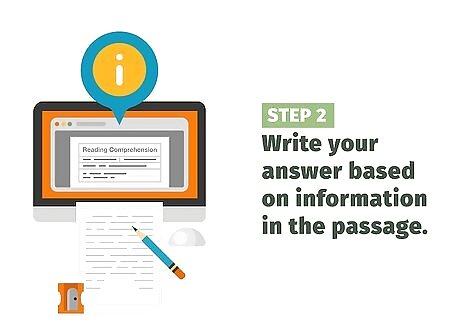
Write your answer based on information in the passage. Writing a short answer essay is to measure how well you comprehend something that you just read. It’s not a test of information you’ve learned in other places. As you write your answer, only use the passage itself to make your argument and support it. Maybe you are reading a passage specifically about the importance of cardiovascular exercise. Don’t spend time sharing information that you know about the importance of eating a healthy diet.
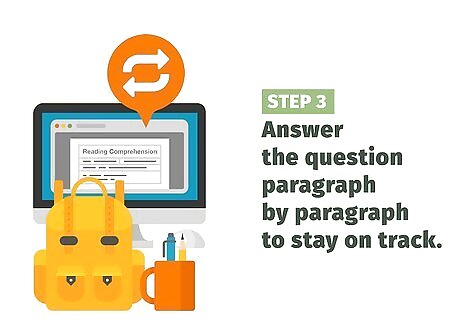
Answer the question paragraph by paragraph to stay on track. As you write your answer, take examples from each paragraph to include in your essay. This will help you make sure that you don't forget to include any key information. It will also help you to organize your essay. Start writing your essay by including information from the first paragraph that relates to the questions. Then move on to the second paragraph, then the third, and so on. You can still read through the entire passage before answering the question. Just go through it paragraph by paragraph as you write.














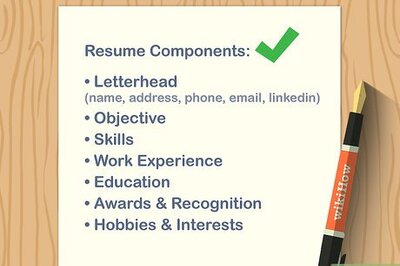





Comments
0 comment